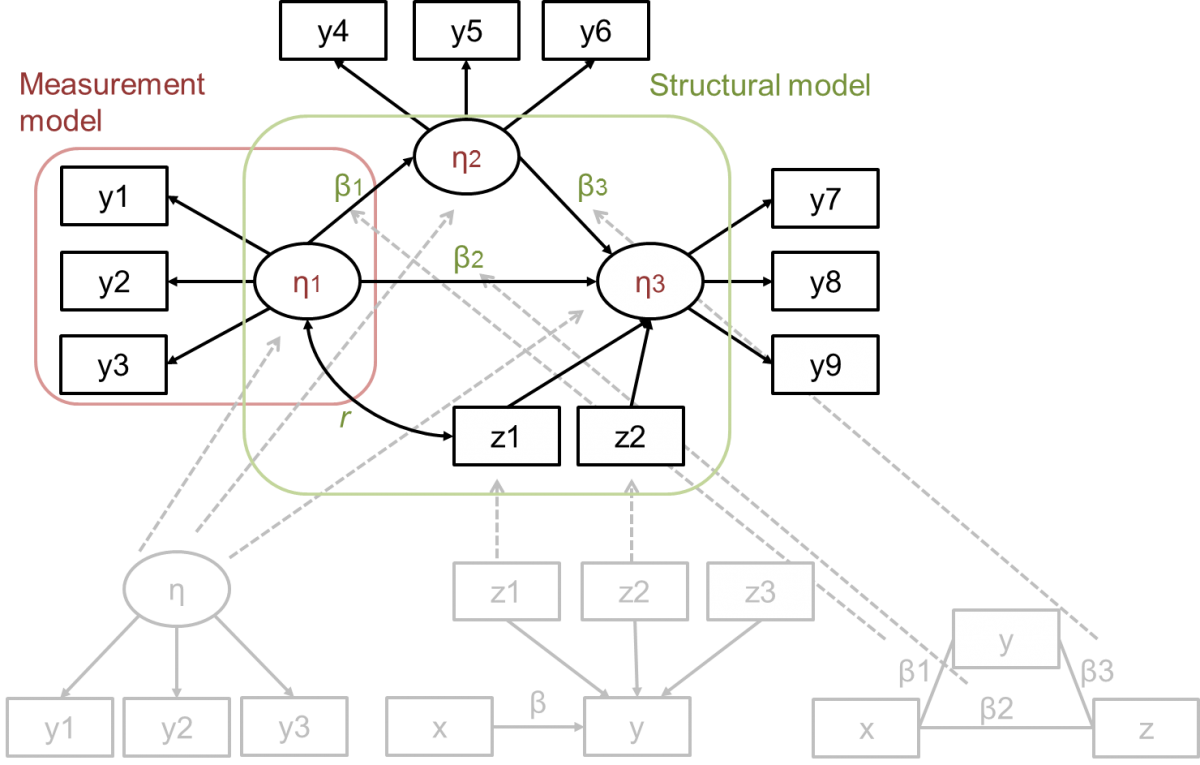
This course is designed as an applied introduction to the use of both AMOS and Mplus software packages for estimating basic structural equation models.
(N.B. Although the instructor will teach and use both packages throughout the course, students are free to use either both packages or they may choose to just work with one of the packages.)
Mr Philip Holmes-Smith (OAM) is the Director of School Research, Evaluation and Measurements Services (SREAMS), an independent educational research consultancy business. His research, evaluation and measurement interests lie in the areas of teacher effectiveness and school improvement, accountability models and benchmarking, improving the quality of teaching, using student performance data to inform teaching, and large-scale achievement testing programs. He is an experienced teacher of social science research methods and is a regular instructor at the ACSPRI programs. He also regularly teaches Structural Equation Modeling (SEM) and Multi-Level Analysis (MLA) at various universities around Australia.
Structural Equation Modeling (SEM) is used widely by researchers in a diverse array of fields to find and test complex relationships amongst observed (measured) variables and latent (unobserved) variables and amongst the latent variables themselves. SEM subsumes other analytical techniques (such as factor analysis, regression analysis and path analysis) into one omnibus approach to modeling relationships amongst observed and latent variables. This course is designed to introduce participants to a range of basic structural equation models and the use of the AMOS and/or Mplus software to estimate the model parameters.
Detailed notes with worked examples and references will be provided as a basis for both the lecture and hands-on computing aspect of the course.
The target audience for this course is post graduate students, academic staff and other researchers needing to learn how to run basic structural equation models using either the AMOS and/or Mplus software.
Day 1
Introduction, revision and the fundamentals of SEM. Topics include a revision of factor analysis and regression analysis and their relevance to SEM. Participants will be introduced to the AMOS and Mplus program including how to draw AMOS diagrams, how to write Mplus syntax, how to run models and how to review output. We will also cover the fundamentals of SEM. Topics include: the advantages of SEM over conventional analytical techniques, the fundamentals underlying SEM and an overview of the eight basic steps to SEM.
Day 2
The eight steps of SEM. Today, the eight steps of SEM are covered in detail, namely: Step 1 - model conceptualisation, Step 2 & 3- path diagram construction and model specification using the AMOS graphical interface and/or Mplus Syntax, Step 4 - model identification, Step 5 - parameter estimation, Step 6 - assessing model fit, Step 7 - model re-specification, and Step 8 - model cross-validation. Participants will continue to learn the AMOS graphical interface, Mplus Syntax, and how to review AMOS and Mplus output.
Day 3
Basic SEM models. This part of the course looks at the three basic types of structural equation models, namely: (i) causal models for directly observed variables (regression and path analysis); (ii) one-factor congeneric measurement models, confirmatory factor analysis (CFA) and second order CFA; and (iii) full structural equation models with latent variables (including models with mediating variables).
Day 4
Part A - Problems in SEM. This part of the course deals with problem data and difficult models including topics such as the treatment of missing data, treatment of non-continuous variables, treatment of outliers; treatment of non-normal data and small samples, constraining parameters, non-positive definite matrices, negative error variances, unidentified and inadmissible models and recognising equivalent models.
Part B - Introduction to advanced SEM models. This part of the course gives a very basic overview of the topics covered in an advanced SEM course including the testing of model and parameter invariance across groups (multi-group analysis); analysis of interactions; non-linear modeling; mean structure analysis; latent growth-curve modeling; and multi-level SEM.
Day 5
Personal Research. Finally, the course provides an opportunity for participants to work on their own research problems with the instructor’s assistance. Therefore, participants are encouraged to bring a data set and/or research problem with them.
This course may run in a computer lab, or you may be advised to bring your own laptop with specified software.
We will let you know in advance.
You are encouraged to bring a data set and/or research problem with you.
Participants must have completed an introductory course in statistics (or have equivalent experience). Familiarity with multiple regression and factor analysis is highly desirable, as is experience with a statistical data analysis package such as SPSS, SAS or Stata. However, it is assumed that participants have had little or no experience with either AMOS or Mplus. While not a pre-requisite, participants with no previous exposure to structural equation modeling are strongly encouraged to first complete the course Fundamentals of Structural Equation Modeling.
The instructor's bound, book length course notes will serve as the course text.
Other references include:
- Arbuckle, J. L. (2016). AMOS 24 User’s Guide. Crawfordville, FL: Amos Development Corporation.
- Muthén, L.K. and Muthén, B.O. (1998-2015). Mplus User’s Guide. Seventh Edition. Los Angeles, CA: Muthén & Muthén.
- Byrne, Barbara M. (2016). Structural Equation Modeling with AMOS: Basic Concepts, Applications, and Programming. (3rd Ed.) New York: Routledge Academic.
- Byrne, Barbara M. (2012). Structural Equation Modeling with Mplus: Basic Concepts, Applications, and Programming. New York: Routledge Academic.
- Kline, Rex B. (2016). Principles and Practice of Structural Equation Modeling (4th Ed.). New York: Guilford Press.
Q: Do I have to have any prerequisites to do this course?
A: Yes, see recommended background section for details.
The instructor's bound, book length course notes will serve as the course texts.
